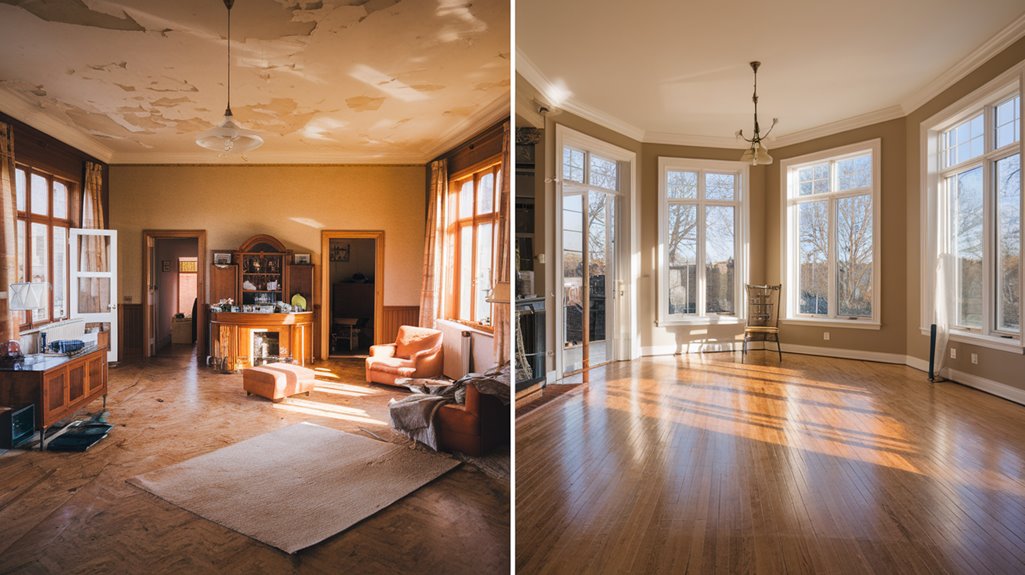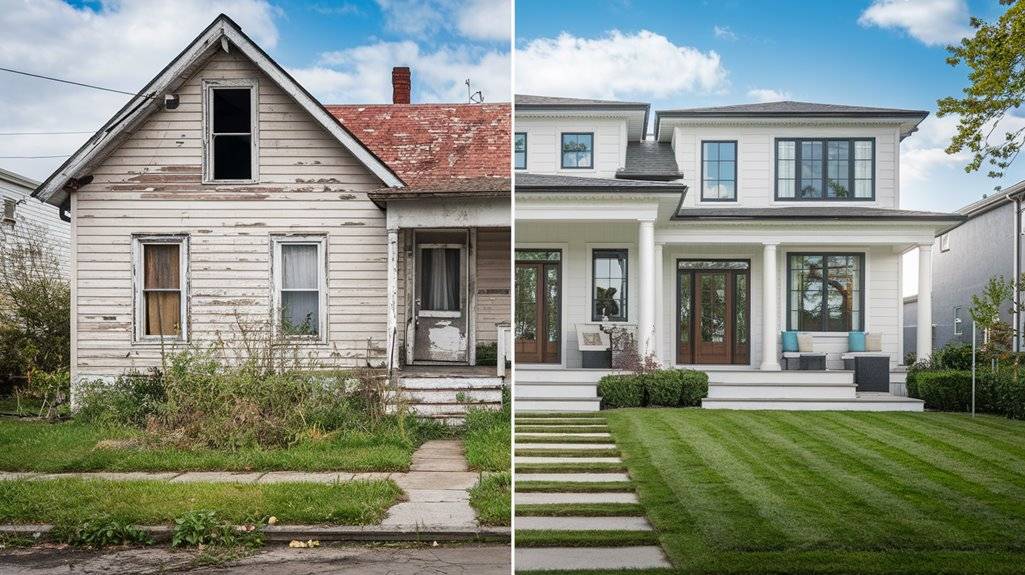Selling your home can be a tough decision with many factors to weigh. Should you fix it up or sell it as-is? The choice affects your time, money, and stress levels. It’s a big problem that needs careful thought to avoid mistakes. But choosing wrong can hurt you.
A bad sale might mean less money or endless delays. Stress builds as repairs pile up or buyers walk away. You could lose time and peace of mind over this. Yet, there’s a way to decide wisely.
Selling as-is offers speed, while traditional sales often bring higher profits. By understanding both paths, you can pick what fits your needs. This clarity helps you sell with confidence. This blog will guide you through both options to solve your home-selling dilemma easily.
Key Takeaways
- As-is sales offer quick closings, while traditional sales often face delays from repairs and staging.
- As-is sales target niche buyers like investors, whereas traditional sales attract a broader audience.
- As-is sales minimize seller effort and paperwork, unlike traditional sales which require extensive involvement.
- Traditional sales may yield higher prices through competition, while as-is often results in lower offers.
- As-is sales reduce contingencies and stress, contrasting with traditional sales’ complex negotiations.
What Is As-Is Home Sale?

An “as-is” home sale means buying or selling a property in its present state, without seller repairs. Sellers make no improvements before closing, so you accept the home as it is. If issues arise, you handle them after purchase.
The term “as-is” has historical roots in old real estate practices favoring buyer caution. Decades ago, sellers rarely guaranteed conditions, leaving risks to you. If you bought back then, you faced potential problems alone.
Today, “as-is” definitions vary by local laws and specific contracts. Some areas mean no warranties, while others include limited disclosures. You must read agreements closely to understand local meanings. If unclear, unexpected legal issues might surprise you during the deal. Additionally, buyers can still conduct inspections during their review period to assess the property’s condition with known defect disclosures.
Key Features of As-Is Home Sale
When you opt for an as-is home sale, you’re stepping into a deal that often promises a fair price, a cash offer, and a faster sale compared to traditional methods. You’ll appreciate the simplified process that cuts through much of the usual red tape, saving you time and effort. Keep in mind, though, that this path typically attracts a limited buyer pool, so you must weigh the trade-offs carefully. Additionally, selling as-is means you can avoid costly repairs with no repairs needed, ensuring a stress-free experience.
Fair Price
A fair price in an as-is home sale means pricing based on the property’s current condition. It reflects visible flaws and needed repairs without any upgrades. Transparency is key to ensure buyers trust the cost. If you price fairly, you will attract serious offers quickly.
Sellers must use accurate assessments like appraisals or market comparisons. These tools help set a realistic price for the home. Buyers often expect a discount for taking on risks. If you overprice, you might scare away potential buyers.
Aligning the price with the home’s true state builds confidence. Local trends also guide a fair valuation. If you stick to data, you’ll navigate this sale easily. Trust in facts ensures a smooth process.
Cash Offer
Cash offers are key in as-is home sales, making the process fast and efficient. They attract buyers like investors or flippers with ready money. These buyers use personal funds, not loans, so deals face fewer obstacles.
Here’s why cash offers benefit you:
- Certainty: Cash buyers skip bank approvals, so deals rarely fall apart.
- Simplicity: You handle less paperwork with these direct sales.
- Control: If issues arise, you can negotiate terms with confidence.
If you choose this path, navigating the as-is market becomes much easier.
Faster Sale
Selling your home as-is offers a quicker process. It cuts down time spent on repairs and staging. This approach avoids delays that can stretch for weeks. You attract buyers who want fast deals. These buyers often value speed over perfection. If you choose this method, you might close in days. It also protects you from market drops. When listing periods drag on, home values can fall. As-is sales help you avoid such risks. They meet the needs of urgent buyers or investors. This strategy ensures a swift and confident transaction.
Simplified Process
Selling a home as-is makes the process much easier and less stressful. You avoid complicated steps and save valuable time. This method cuts through delays with clear and simple actions. If you choose this, you won’t face endless repair demands. Instead, you offer the property in its present state.
Here’s why this option benefits you:
- Minimal Effort: You don’t have to fix or decorate the house.
- Quick Process: Skip constant repair talks and move ahead fast.
- Honest Terms: Set clear conditions early for full transparency.
If you want a smooth sale, try this easy approach now.
Limited Buyer Pool
Selling an as-is home often shrinks your buyer pool significantly. Many buyers avoid properties needing major repairs. Only specific groups, like investors or skilled renovators, usually show interest. Families and first-time buyers shy away from such risks. If you ignore this, finding a buyer becomes much harder.
Marketing an as-is property also brings clear challenges. You must honestly describe the home’s condition to prevent issues. Crafting a targeted listing for niche buyers is essential. If done poorly, casual buyers will likely pass. With limited appeal, expect slower sales and lower offers.
Reduced Contingencies
Selling your home as-is brings the benefit of reduced contingencies. This means fewer risks that can disrupt a sale. You avoid constant repair requests or appraisal issues. It creates a smoother process with clear expectations. Buyers know what to expect without sudden changes.
Here’s why fewer contingencies are important:
- Quicker Sales: If repair demands are absent, closing happens faster.
- Stable Deals: When conditions are minimal, cancellations drop significantly.
- Reliable Plans: With lower risks, you can trust the agreed terms.
What is the Traditional Home Selling Process?

The traditional home selling process helps you get the best value for your property with clear steps. It starts by hiring a real estate agent to analyze the market and set a fair price. You will pay a commission, usually a percentage of the sale price, for their help.
Next, prepare your home for listing by staging it to impress potential buyers. If done well, staging can make your home feel inviting during showings. Then, list your property, host open houses, and negotiate offers from buyers. Once an offer is accepted, handle inspections and appraisals before closing. If issues arise, ensure all legal and financial details are finalized properly. Alternatively, you can explore options like selling directly to a buyer with fair cash prices for a quicker, less complicated process.
Key Features of Traditional Home Selling
When you choose traditional home selling, you’re aiming for a possibly higher price, but you’ll need patience due to a slower sale process. You’ll also find it’s a more involved journey, requiring your active role in repairs, staging, and negotiations. Yet, with this approach, you’ll attract a broader buyer pool, increasing your chances of finding the right offer. Additionally, unlike selling as-is, traditional methods often involve agent fees and commissions that can reduce your overall profit.
Potential for Higher Price
Savvy homeowners understand that traditional home selling often brings a higher price than as-is sales. When you choose traditional sales, your property attracts buyers who value its true worth. If you present it well, you avoid the limits of as-is deals. A appealing home draws competitive offers from families and individuals. This can significantly increase the final price.
Here’s why traditional sales might boost your return:
- Staging Impact: Simple updates enhance appeal, making buyers ready to pay more.
- Market Competition: You reach more buyers, which could start bidding wars.
- Emotional Connection: Creating a “home” vision inspires buyers to offer higher amounts.
Slower Sale Process
How long can you wait for the right buyer in a traditional home sale? This process often demands patience. Market conditions might delay sales for months if demand drops. Interest rates, if high, can scare off buyers with tight budgets. Economic issues, like job fears, may lower buyer confidence too. You must keep your home ready for showings while waiting. A quick sale isn’t guaranteed in this method. If timing isn’t in your control, the wait can test endurance. Unlike faster options, traditional sales depend on unpredictable factors.
More Involved Process
A traditional home sale requires your full attention at every stage. You manage a detailed transaction with careful effort.
Here’s what you’ll handle in this detailed process:
- Home Staging: You should prepare your property to attract buyers. Invest time and money in decor or minor fixes if needed.
- Legal Paperwork: You must handle many documents for compliance. If errors occur, they could delay the sale or cause issues.
- Negotiations: You will deal with offers and counteroffers directly. Sharp decisions are key if you want favorable terms.
Broader Buyer Pool
Many buyers prefer traditional home sales for well-kept, move-in-ready properties. Choosing this path helps you attract a wider audience. Families, first-time buyers, and investors often want homes without urgent repairs. If you list traditionally, your market grows significantly.
To reach varied buyers, use tools like Digital Advertising. Promote your home on real estate sites and social media. Also, consider Network Expansion with skilled real estate agents. They can link you to buyers through their contacts. If done right, your home will appeal to many people.
Why Selling A House As-Is Is A Good Option

Selling a house as-is can be a wise choice for many homeowners. If you want to avoid repair hassles, this option saves time. It also reduces stress and offers a quick solution.
Here’s why this could work for you:
- Fast Deals – You can close sales quickly without repair delays.
- Money Saved – Avoid costly upgrades and retain more cash.
- Clear Expectations – Buyers understand the condition, reducing potential conflicts.
Choosing an as-is sale gives you control and peace of mind. If challenges arise, this path eases your burden. Additionally, you can benefit from fair cash offers provided by trusted local buyers.
Conclusion
In conclusion, selling your home as-is offers a quick, hassle-free option. If you prioritize speed, this path avoids repairs and delays. Choosing traditional sales, however, can maximize value with effort and time invested.
If speed and simplicity matter, consider companies that buy houses for cash. We at Freedom Path Investors provide fast, fair offers. If repairs overwhelm you, this could be your solution.
Should you need a swift sale, reach out to us at Freedom Path Investors. We’re ready to help with your home’s next step. Contact us today for a no-obligation offer.








